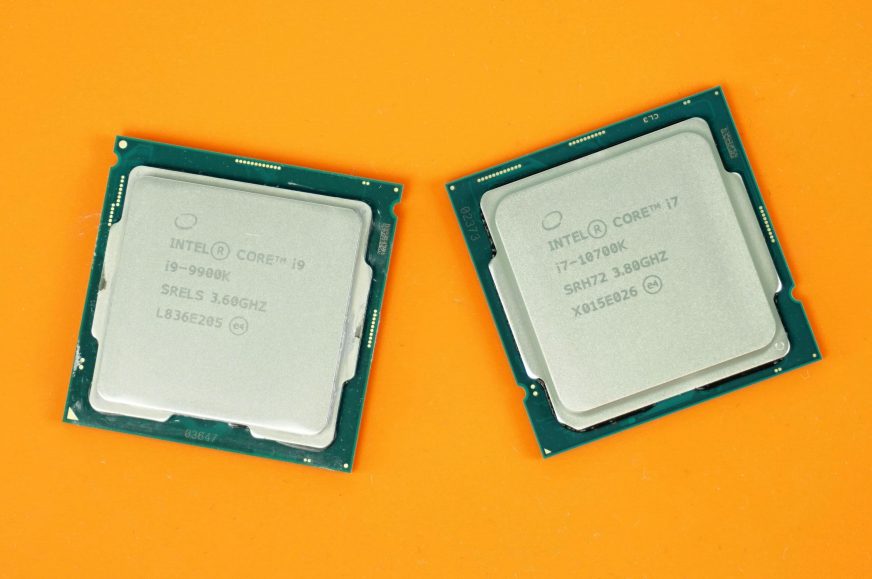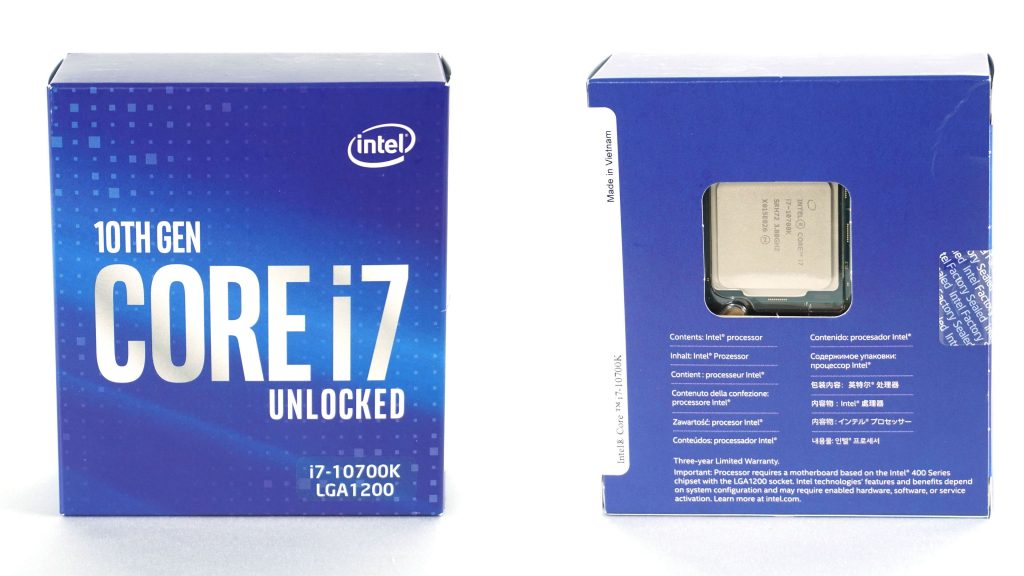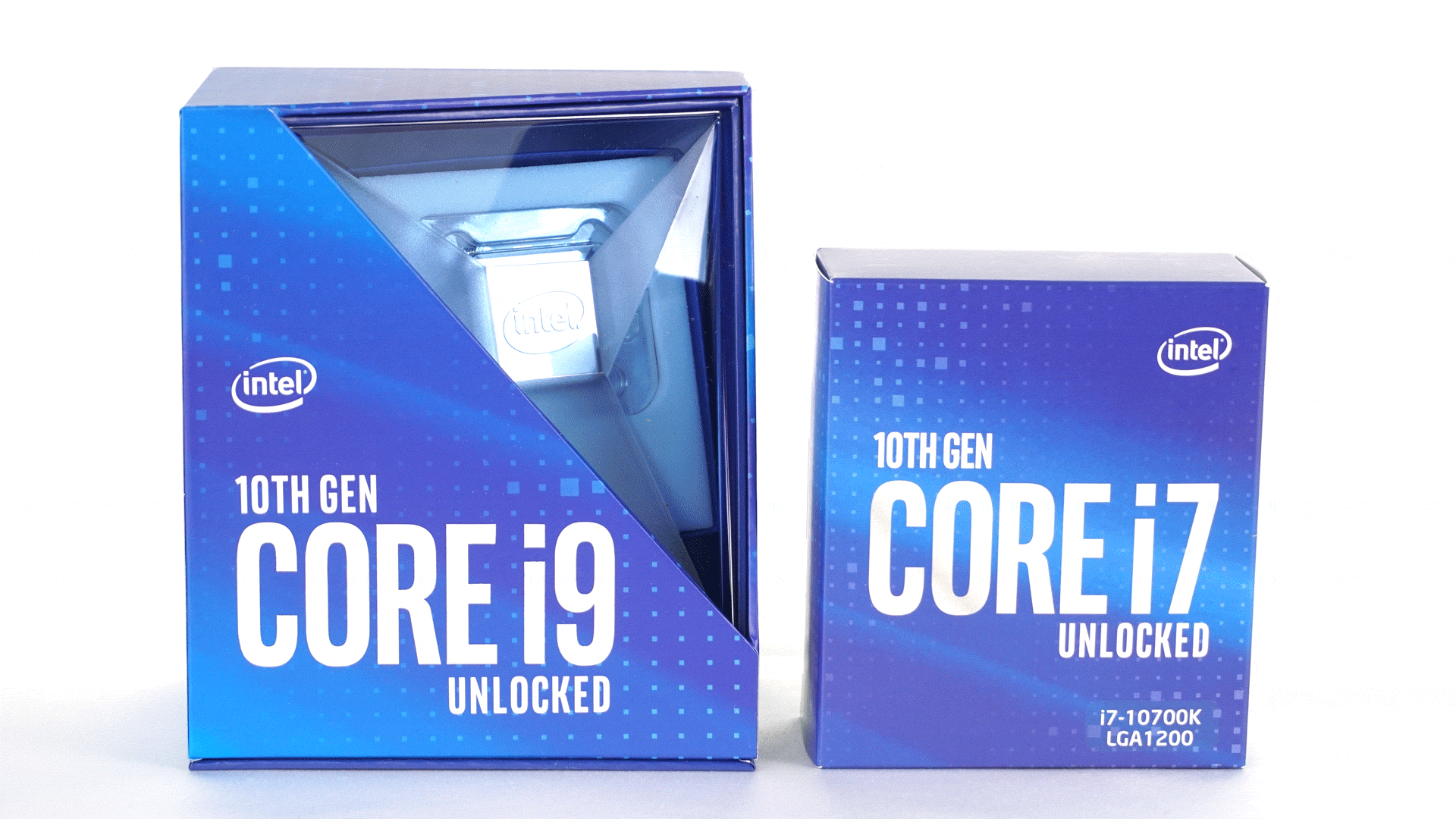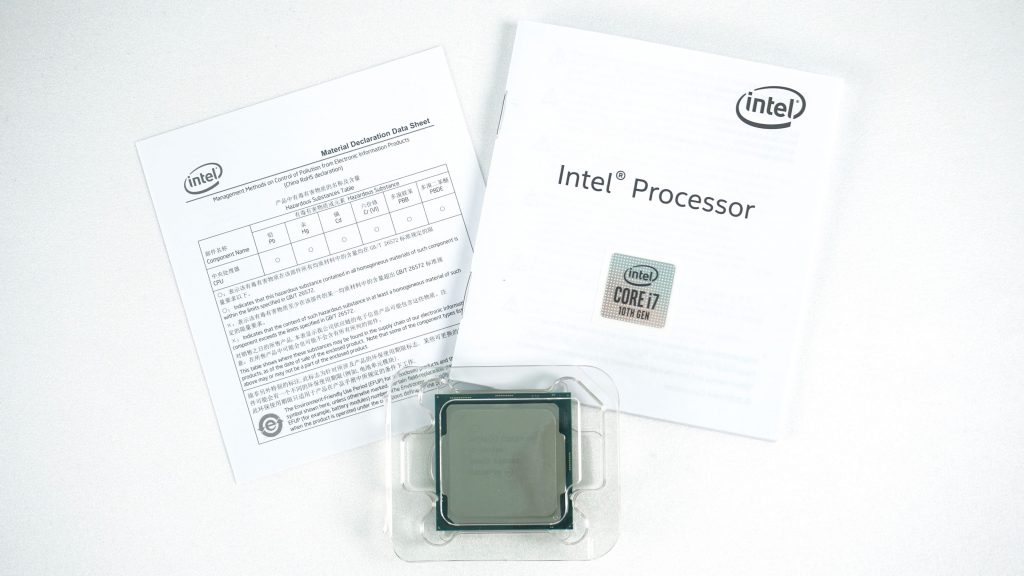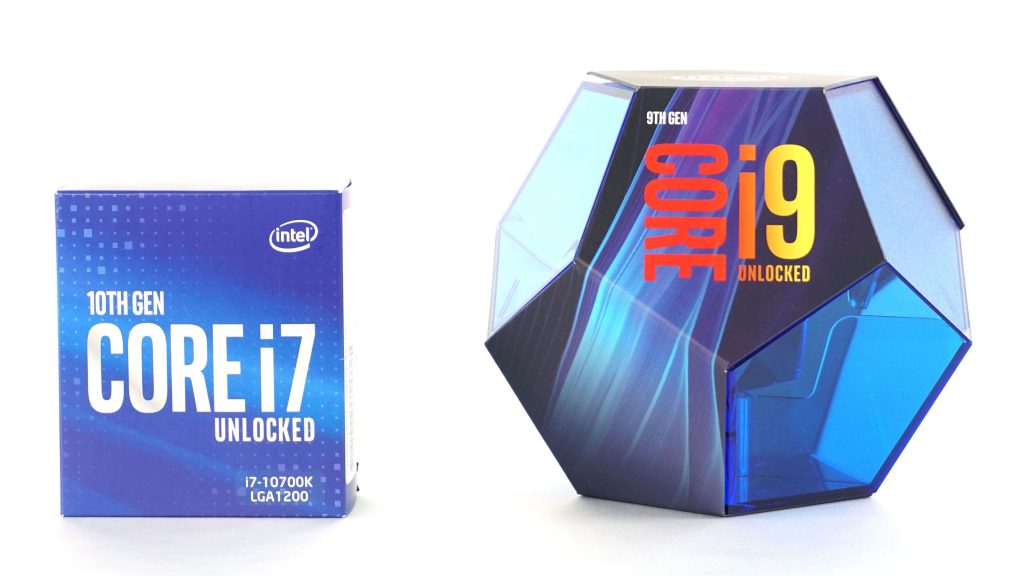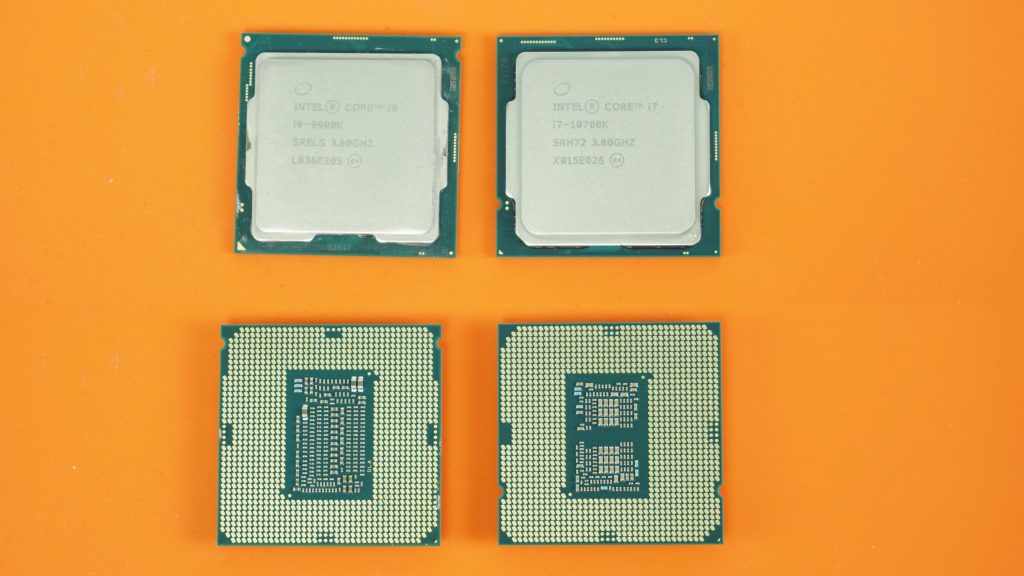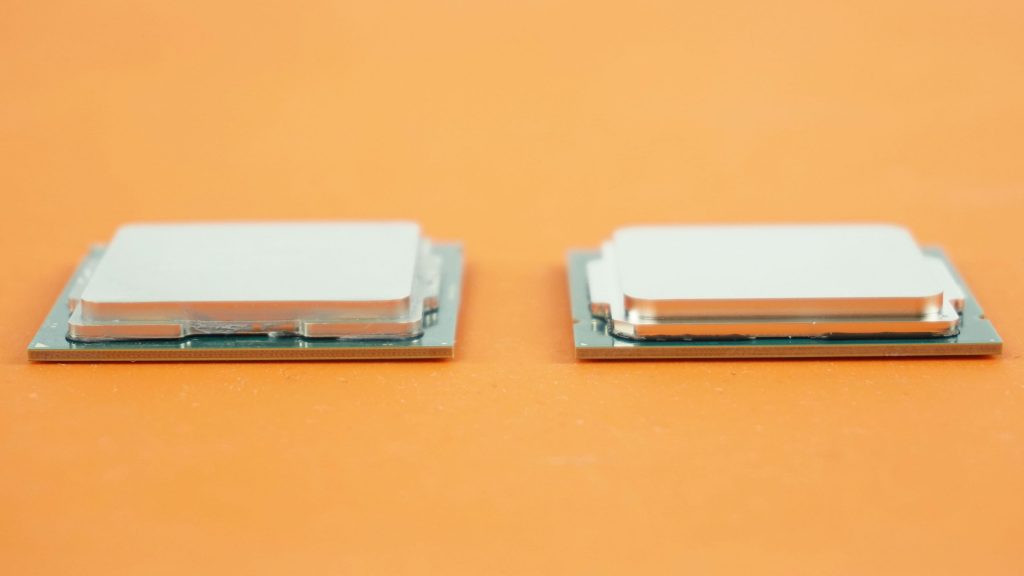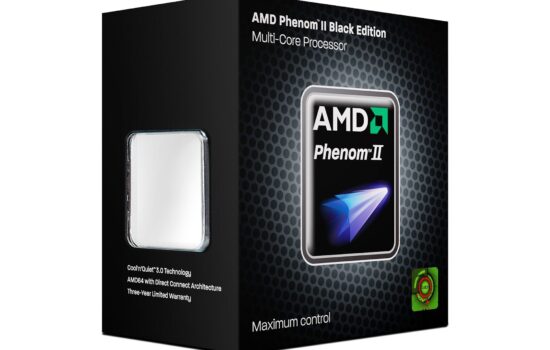Tuned Core i9-9900K
In the latest Core i9-10900K test, we found it to be great for high fps games, but the power draw, price and performance are not as good as the competition, AMD, offers. Intel still maintained its lead in games, but the 10900K is definitely not an ideal processor. If games are your priority, the alternative may be the Core i7-10700K which is actually just a redesignated and slightly modified Core i9-9900K.
New on the outside, old inside?
The Core i7-10700K is practically a replacement for the Core i9-9900K with which it shares much similar. It also has 8 cores and 16 threads, 16 MB cache, 14 nm lithography process, can be overclocked and has an integrated GPU. However, following the example of the new i9-10900K, it officially supports faster 2933 MHz memory and also has a higher 125 W TDP. As you probably know, the 9900K with 95 W TDP was a target of criticism, so this time Intel has already increased the value of TDP, but nothing has changed about the fact that it doesn’t say much about the real power draw and it’s just a pseudo value.
Belonging to the 10th generation Comet Lake-S also means changing the socket to LGA1200, so 9900K and 10700K are compatible with each other. You will not install the 9900K in a new Z490 motherboard or the 10700K in an older Z390 one. As with the 10900K, the clock speed was increased and new Turbo technologies were also used. However, we will not find Thermal Velocity Boost here which is only reserved for the new i9. The 10700K thus has “only” four clock speed values. Base 3.8 GHz, Turbo Boost 2.0 single core 5.0 and all cores 4.7 GHz. Turbo Boost Max 3.0 for the favored core is set to 5.1 GHz. In practice, this means an increase in base clock speed of 200 MHz and 100 MHz for one core, assuming optimal thermal conditions.
The difference in the i9 and i7 packages is big in terms of design. However, the contents of the package are identical, again only the documentation and the processor as usual.
Basic specs and comparison
| Parameters | AMD Ryzen 9 3900X | Intel Core i9-9900K | Intel Core i7-10700K | Intel Core i9-10900K | |
| Processor cores | Processor cores | 12 | 8 | 8 | 10 |
| Processor threads | Processor threads | 24 | 16 | 16 | 20 |
| Base frequency | Base frequency | 3800 MHz | 3600 MHz | 3800 MHz | 3700 MHz |
| Precision/Turbo Boost frequency | Precision/Turbo Boost frequency | 4600 MHz | 5000/4700 MHz | 5100/4700 MHz | 5300/4900 MHz |
| Supported RAM freqency | Supported RAM freqency | 3200 MHz | 2666 MHz | 2933 MHz | 2933 MHz |
| Memory channles | Memory channles | 2 | 2 | 2 | 2 |
| Intedrated graphics adapter | Intedrated graphics adapter | no | yes | yes | yes |
| L1 Cache | 4-pinové konektory PWM | 768 KiB | 512 KiB | 512 KiB | 640 KiB |
| L2 Cache | Interní porty USB | 6 MiB | 2MiB | 2MiB | 2,5 MiB |
| L3 Cache | RGB konektory | 64 MiB | 16 MiB | 16 MiB | 20 MiB |
| TDP | 105 W | 95 W | 125 W | 125 W | |
| Cooler | Cooler | AMD Wraith Prism RGB | no | no | no |
| Lithography | Lithography | 7 nm FinFET (TSMC) | 14 nm | 14 nm | 14 nm |
| Version of PCI Express (and lines) | Version of PCI Express (and lines) | 4.0 (16 + 4) | 3.0 (16) | 3.0 (16) | 3.0 (16) |
| Socket | Socket | AMD AM4 (PGA 1331) | Intel FCLGA1151 | Intel FCLGA1200 | Intel FCLGA1200 |
| Overclocking | Overclocking | yes | yes | yes | yes |
| Price incl. VAT (czc.cz) | Price incl. VAT (czc.cz) | 11 990 CZK/450 EUR | 14 290 CZK/540 EUR | 11 341 CZK/425 EUR | 14 681 CZK/550 EUR |
We will mainly be comparing the 10700K with the 9900K, but in the graphs you will also see 10900K and 3900X for a better overview.
As with the 10th generation, the older i9 has a more premium package. In both cases, however, it is only cosmetics, do not look for any other added value.
If you look at the processors being compared, you can see that they are almost identical at first glance, but they differ in a few details. The main one is the cutouts for mounting in the socket. The 10700K has them at the bottom, the 9900K at the top. Therefore, it is physically impossible to place any of these processors in a wrong socket.
The difference between the 9th and 10th generations is also the thickness of the silicon inside the processor. As a result, the IHS for heat dissipation can be larger and should be at least a partial solution to the high power draw you saw in 10900K. We looked at this topic in a separate article, where you can find more information about it.
Testing methodology
We tested the processors at home, not in a laboratory environment. Nevertheless, the effort was made for the most accurate results. These are therefore the average of the measured values from repeated tests. We tried to eliminate factors that would affect performance in addition to the processor itself and the motherboard. We used the same components in both cases. The idea of all tests was to use base settings and turning on XMP, no other adjustments were made. This is how most users will actually function.
| Test setup | ||
| Processor | AMD Ryzen 9 3900X | Intel Core i9-10900K |
| Motherboard | Gigabyte X570 Aorus Xtreme | Gigabyte Z490 Aorus Xtreme |
| CPU cooler | Fractal Design Celsius S36 | |
| Thermal compound | Noctua NT-H1 | |
| RAM | Corsair Dominator Platinum RGB, 2× 8 GB, 3600 MHz/CL16 | |
| Graphics card | Gigabyte Aorus RTX 2080 Ti Xtreme OC 11 G | Gigabyte Aorus RTX 2080 Ti Xtreme OC 11 G |
| SSD | Gigabyte Aorus PCIe 4.0 NVMe SSD 2 TB | Adata XPG Gammix S11 Pro 1 TB |
| Power supply | SeaSonic Prime 1300 W (80Plus Gold) | |
| PC case | Lian Li PC-T70 |
- Contents
- Tuned Core i9-9900K
- Rendering and Geekbench
- Gaming, graphics tests and PC/3DMark
- Encryption, encoding and memory tests
- Heating and power draw
- Rating





